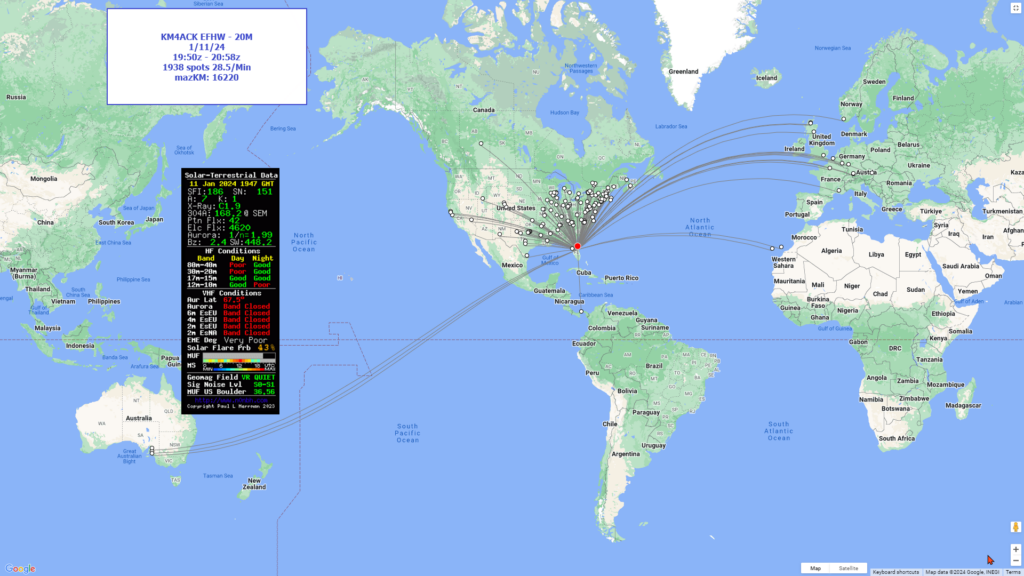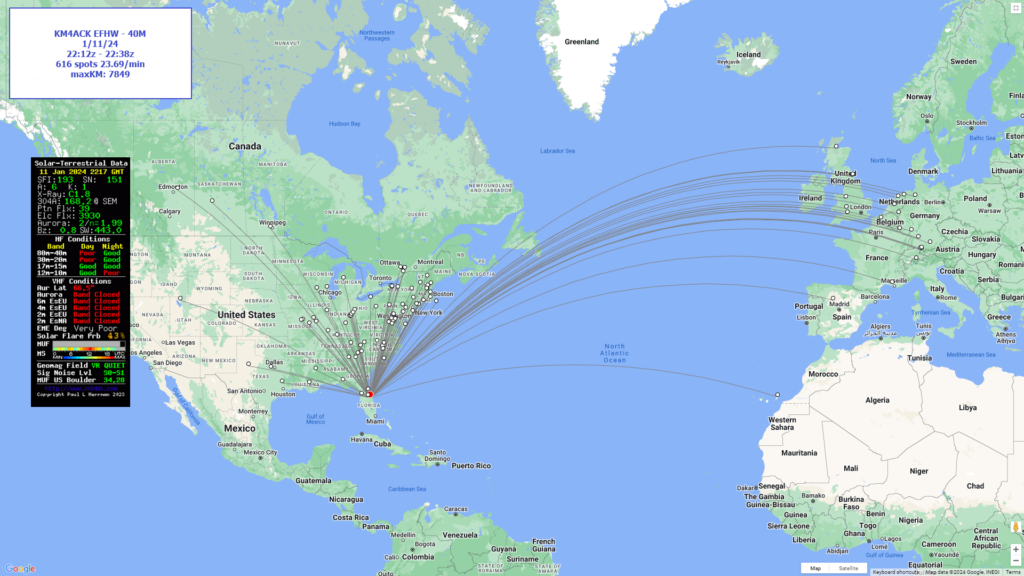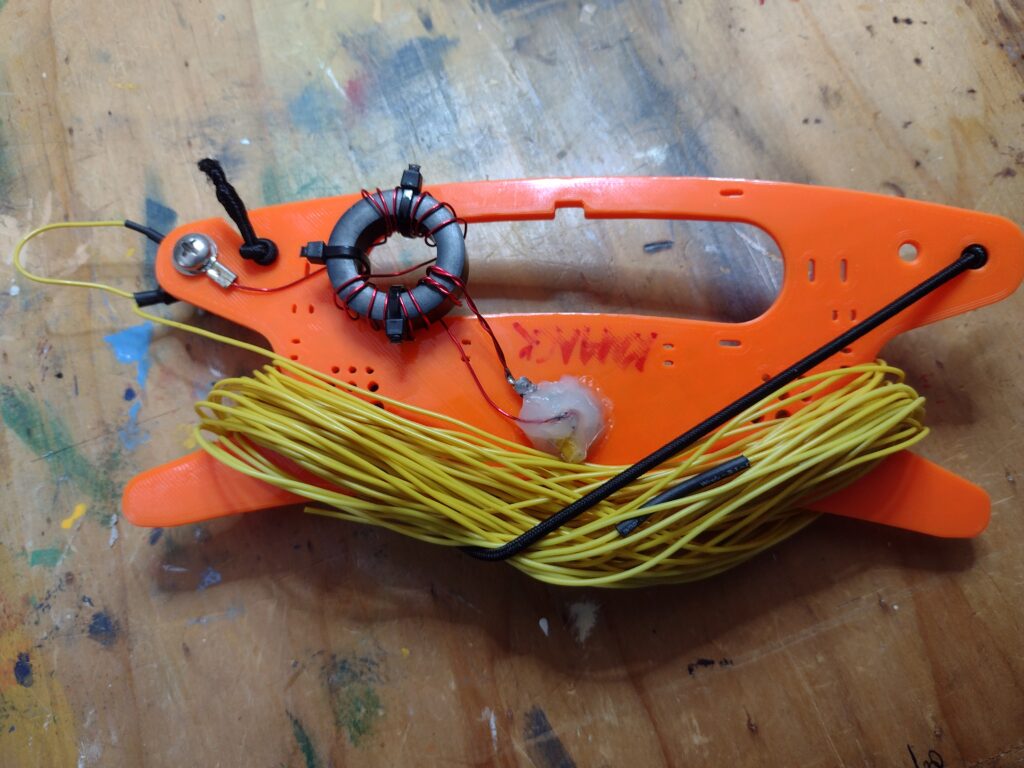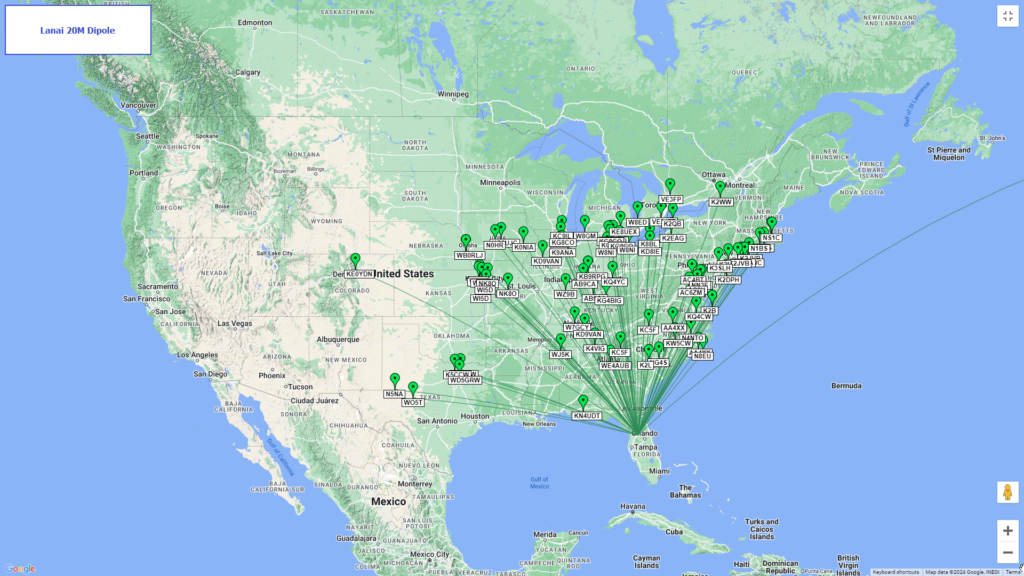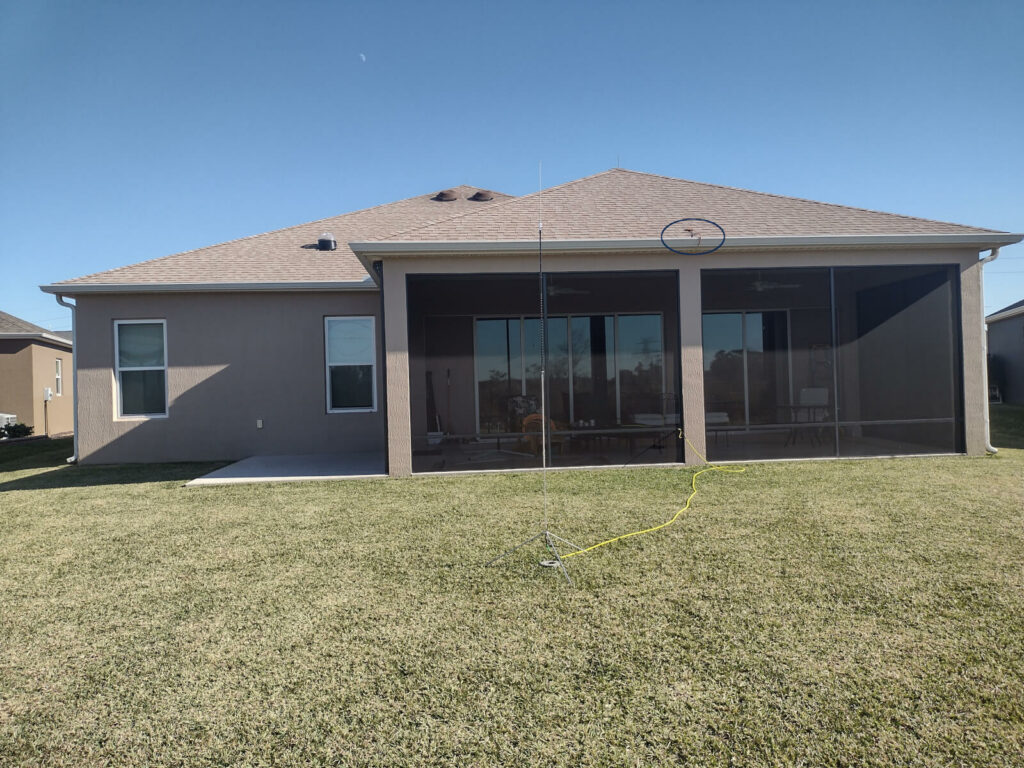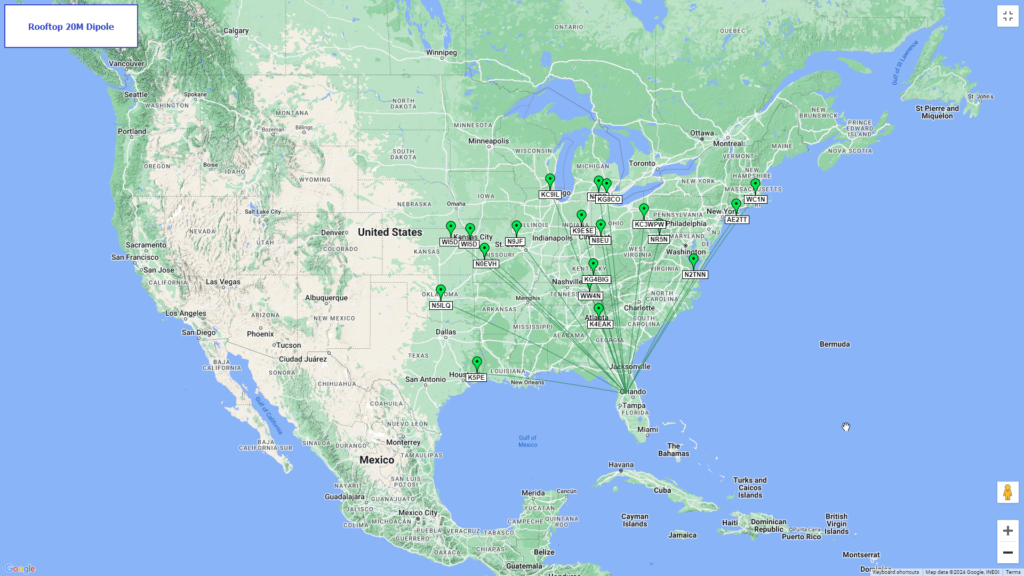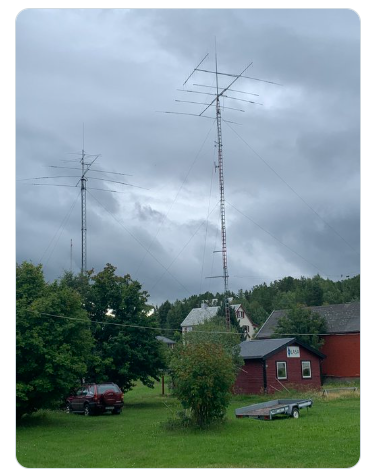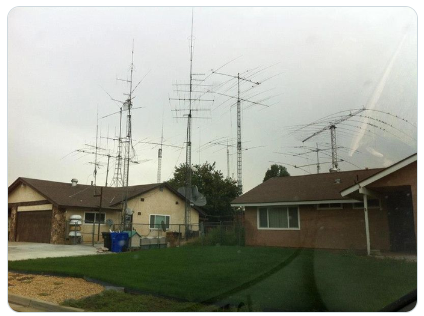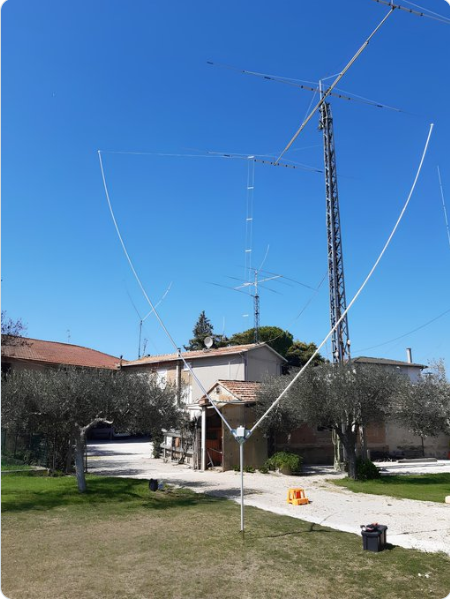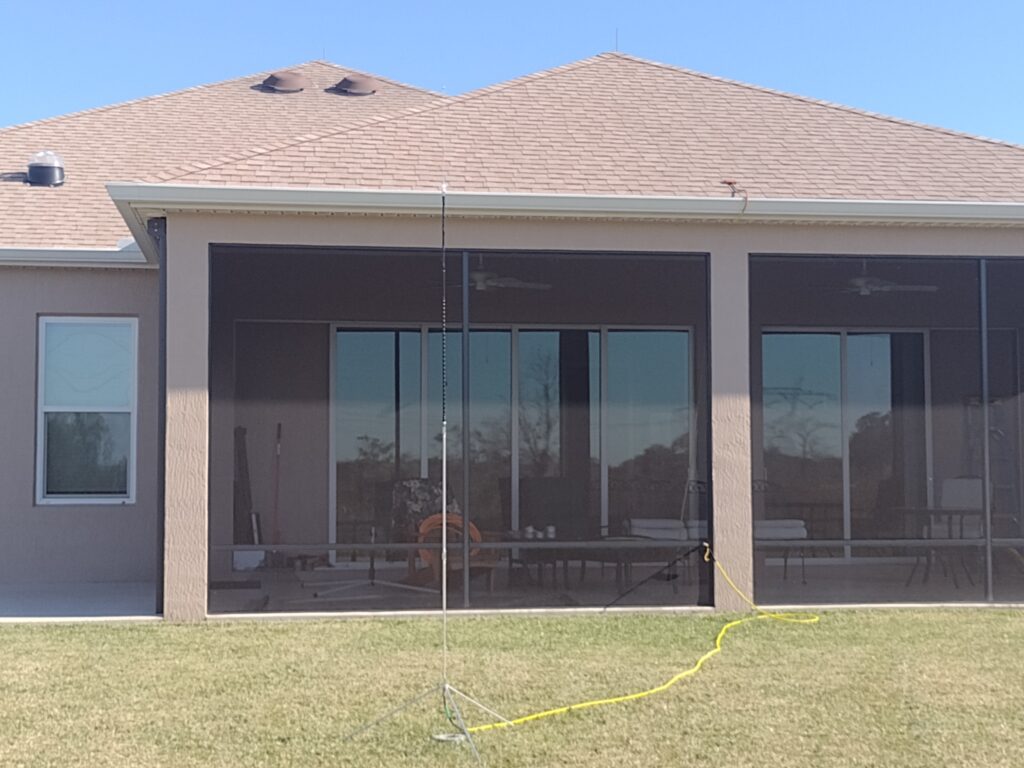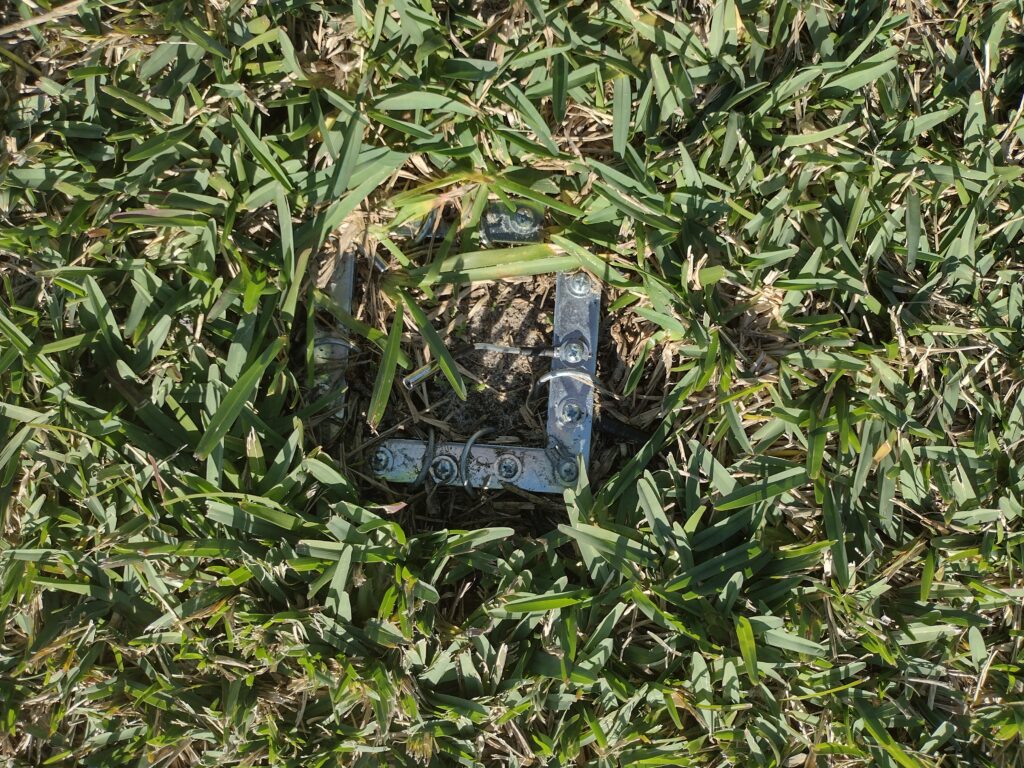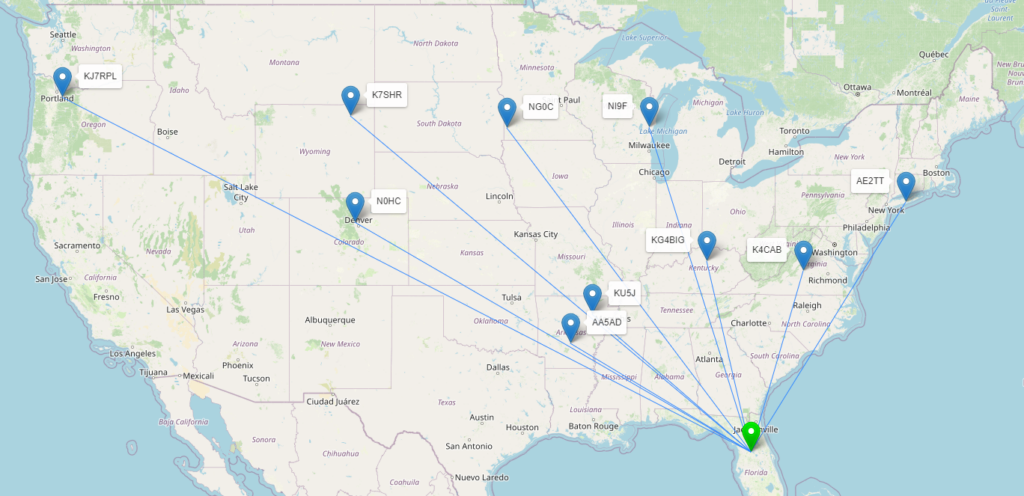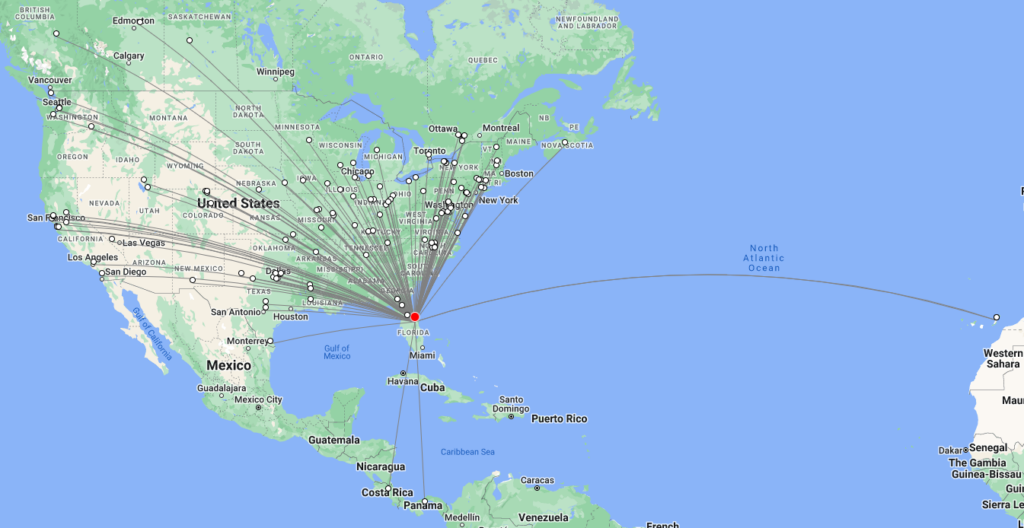This follows the EFHW Fail article. There are a lot of ways to configure an End Fed Half Wave antenna. The earlier article explored a variant that sort of works, but not as well as expected … and certainly not as well as this one.
This EFHW variant is very common, a 49:1 transformer, bridged with a 100pf capacitor, and about 67 feet of wire. It is designed for 40M and higher. Once assembled, the wire is cut to a length that produces the desired resonance points, and there are several with this design.
About design… There’s a well known chart for Random Wire Antenna Lengths. It shows all sorts of lengths to use for antennas that are (1) random length, (2) are not resident on any band, and (3) always require the use of an antenna tuner. There must be some good rationale for such a thing, but it befuddles me why anyone intentionally always wants to use part of their RF output to warm up coils in a tuner. Aren’t antennas resonant at the desired frequencies a lot more efficient? OK, let’s set that aside… the chart is also, maybe unintentionally, helpful for offering the good lengths for EFHW antennas that have multiple natural resonance points. Just use the parts of the chart marked in red that the chart labels “Lengths to avoid.” They are EXACTLY the ones we want.

That blue oval is my addition to the chart, and the starting point for this antenna’s length. The actual length, trimmed as I like it, is 66 feet, 5 inches.
The design is so popular that a number of hams sell kits for building a 40m version. These are the people willing to gather all the parts, package them nicely for us, and save us the effort of finding each individual piece. Just try buying one BNC connector and paying shipping for it, then the wire, then the capacitor, then the torroid, etc. etc. One of those kit packagers is Jason Oleham, KM4ACK. His kit sells for about $40 and is often out of stock because of its popularity. The KM4ACK EFHW kit was the starting point for my EFHW adventures. It worked better than many other wire antennas I experimented with over the past year. As advertised, it is naturally resonant on 40M, 20M, 15M and 10M. With careful trimming, I made mine happy to work very well in the CW portions of those bands. BTW, it works with NO counterpoise, and is not sensitive to feedline length.
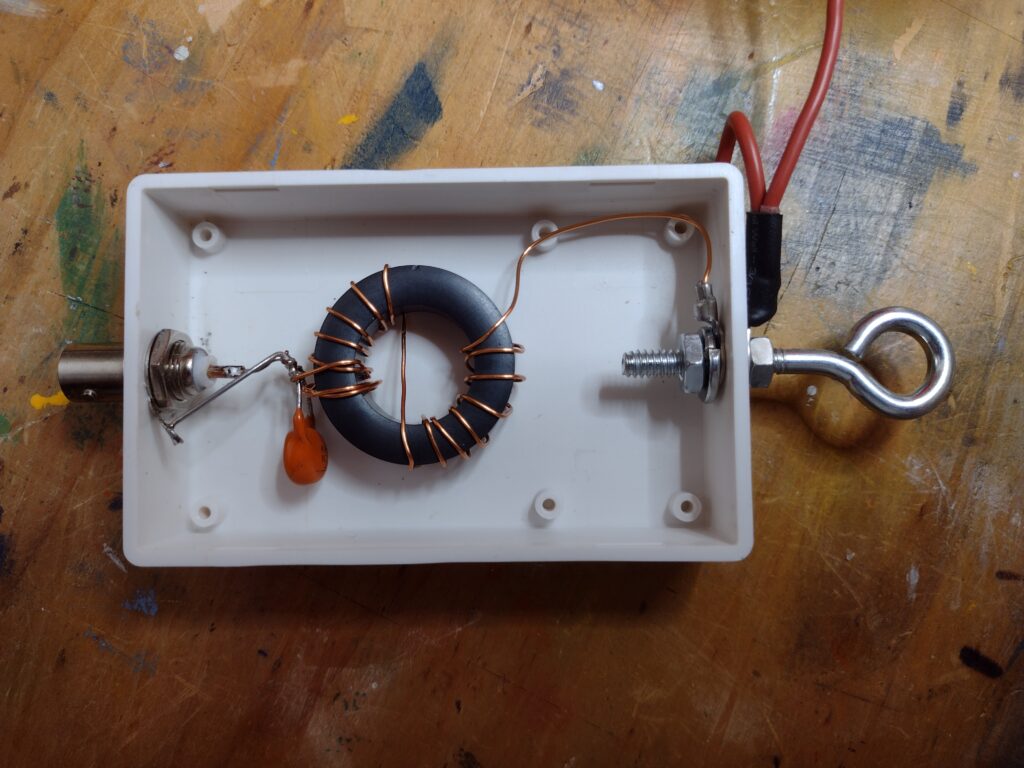
After testing the KM4ACK EFHW, I tried other EFHW variations and came back to the KM4ACK as “the winner.” My goal is to use it as a permanent antenna in the attic. I have repackaged it into a small plastic box that’s more appropriate for hanging in the attic. I also changed the wire from very lightweight 18 AWG, very nice for portable ops, to more durable 22 AWG.
My test setup is an inverted vee in the backyard. That’s about the shape it will have with optimum placement in the attic. Outside, I support it with a 17 foot collapsible fiberglass mast. As tested, the ends are only about 18 inches above ground, something that will be 8 or 9 feet higher in the attic.

Below are NanoVNA screenshots for 3-20Mhz, 40M, 20M, 15M and 10M. In all the charts, the marker shows the QRP hailing frequency in the CW portion of the band.
Interestingly, the tuner built into the Penntek TR-45L can tune this antenna on 80M and 30M, but definitely not on 17M. I haven’t actually made contacts with the tuned results on 80M and 30M, but have on the other bands. I’m very pleased with the results, a good step toward frequency resilience for this HOA ham. Next, let’s see what it does when placed under roof.
Under roof update: My original idea was to use this successful antenna as an indoors antenna, in the attic space of our home. That didn’t work out so well. Due to a local prohibition against wandering around in the attic, I hired a wiring firm to do the job. With little antenna experience they installed it, but not as high as I wanted, and “folded” into a tortuous path. It’s a failure in any but the last-chance alternative.
Next, let’s look at a couple of WSPR runs for the bands I use most, 20M and 40M. I’ll get to WSPR runs for the other bands soon. In the meantime, I’ll mention that my first contacts on 15M and 10M with this antenna were TX and AZ.
